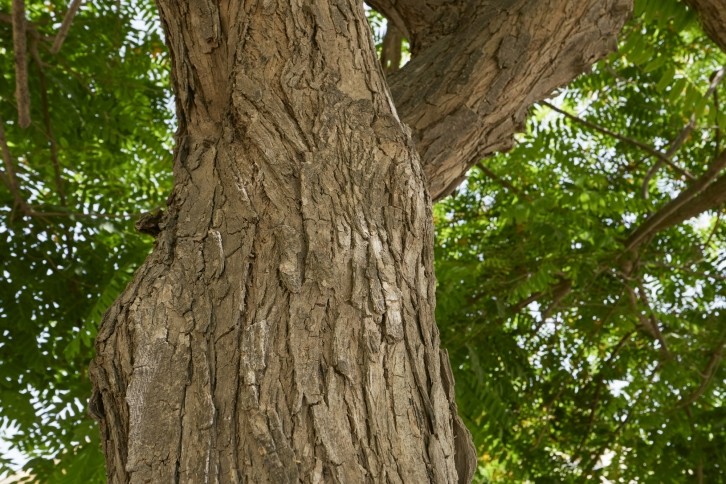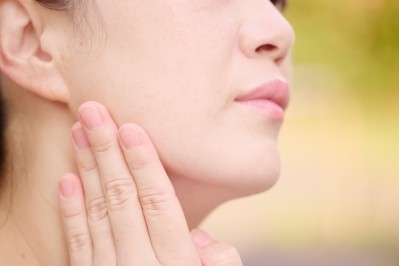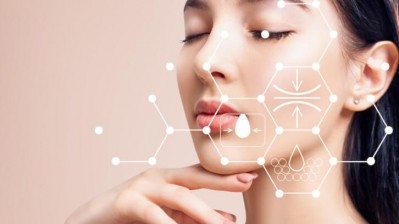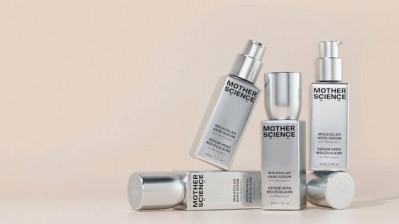Liftyl biofunctional offers ‘alternative to retinol’ with similar proven efficacy

During the In-Cosmetics Global convention earlier this year, American chemicals company Ashland Global debuted one of its latest innovations in the cosmetic and personal care product ingredients space: Liftyl biofunctional. Extracted from upcycled rosewood chips, this ingredient was developed to support the formulation of cosmetics products designed to sculpt the face and works by lifting and redefining facial contours with regular use.
To learn more about the research and development of Liftyl biofunctional, the technology and techniques involved in the development process, and the environmental impact of upcycling a sustainable ingredient source, CosmeticsDesign spoke with Anne Clay Viardot, Marketing and Business Development Manager, Skin Care at Ashland Global for her insights.
Background in biofunctional development
Regarding the development of biofunctionals like Liftyl, Viardot first acknowledged that “the personal care industry is a science-driven and highly innovative sector, and product innovation in the beauty industry can take over five years of research and formulation to bring a new product to the market.” Across Ashland Group, product research “delves into all imaginable aspects of science, beauty and well-being, from the biology of skin, hair, and oral cavity to new innovative technologies, investigating consumer trends and aspirations, improving sustainable sourcing and development methods,” she said.
Further, “this research fosters the development of the efficacious biofunctionals that are safe for humans and the environment, and to subsequently create or re-develop biofunctionals that respond to the ever-changing expectations of consumers,” she explained. Regarding Liftyl specifically, the development process behind this ingredient is “one example of the latest example of scientific research in the domain of ethno-genomic face sculpting and consumer aspirations to transformational beauty without surgery,” she shared.
When approaching the ingredient development process, the Ashland team researched the efficacy of rosewood as a topical bioactive ingredient. About the extract, Viardot said that “rosewood is a noble wood, traditionally used to sculpt luxury items or used as a fragrance for its woody and floral scent.” Additionally, she added that “whether used in fragrances or fashion, rosewood suits fair and pigmented skin, men and women, it’s an all-inclusive ingredient.”
For the most efficient and effective application of rosewood’s potential as a face sculpting active biofunctional, the researchers created a patented and unique rosewood extraction “by upcycling wood chips leftover from the fragrance industry.” Thus, “Ashland creates value out of a by-product and uncovered new functionalities in this extract using AI,” she said.
As detailed in company literature shared about the ingredient innovation, this extract offers “an alternative to retinol with similar-proven efficacy and no irritation potential that addresses ethnogenomic face sculpting markers unveiled by Ashland’s AI to lift facial contours in Caucasian and Asian skin” types.
Technological innovation in the development process
Technological innovations played a crucial role in the research, development, and testing of the Liftyl biofunctional ingredient, including AI and molecular docking techniques. As Viardot explained, Ashland uses AI “can be used either to predict the biological pathways and hence, the skin benefits, it can also be used to map all components (genes, RNAs, proteins) involved in a biological activity, it can eventually be used to find additional activities, and new applications.”
Regarding the application process to Liftyl’s development, “Ashland scientists were interested in looking at all components involved in face sculpting in different ethnicities,” she said. Specifically, the researchers utilized AI to determine there were “around 300 components associated with face sculpting, and among these 300, they selected three of interest because associated with a decline with skin aging: fibulin 7, collagen 17a1, and collagen 5a3,” she explained.
Further, she added, “AI can also be used to predict the affinity of a molecule with a receptor,” also known as molecular docking. Viardot defined molecular docking as “a computational chemistry/biophysics technique to determine relative affinities for small molecules to fit the binding sites of protein (and other biomacromolecules), which is used extensively in drug design.”
When utilizing this process, “experts first need to identify protein binding site (usually through known crystal structures), then place a molecule in random orientations within binding site and calculate an energy or score,” she said. From there, the identified molecules with the most negative energy are the best candidates, she added.
Regarding the testing process as applied to Liftyl, the biofunctional “was tested for its affinity with retinoic acid receptors and predicted to have a good affinity with these receptors” said Viardot. From there, “these predictions were then tested on Asian and Caucasian skin, ex vivo, and showed an increase in the cell Retinoic Acid Binding Protein 2 (CRABP2) as well as a comparable efficacy in increasing the face sculpting markers,” she explained.
Measuring environmental impact
Liftyl’s environmental sustainability potential was equally important to its efficacy in the development and formulation process. Said Viardot, “the fact that Liftyl is made out of upcycled wood chips is definitively an element that contributes to the environmental sustainability, but there is more than the upcycling.”
The rosewood used in the extraction process has been listed in the Appendix II of CITES since 2010, which designated it as a protected wood species, according to company literature. As the rosewood is CITES-protected, this means that Ashland has “all permits ensuring the traceability over the supply chain, and the control use of a protected resource,” she said.
This is important because “the fact that rosewood is CITES certified contributes to the maintenance of healthy tropical forest ecosystems and providing important resources for forest-dependent indigenous and local communities,” she explained, and establishes the extract’s source as environmentally sustainable.
The final Liftyl product debuted at In-Cosmetics global is the result of this thorough development process and is “a new to the world approach to face sculpting which echoes a very popular consumer trend associated with the use of retinol and face sculpting tools,” she concluded. Further, it also “also echoes the consumer aspiration for transformational beauty without surgery,” she added, reinforcing the ingredient’s added efficacy for future product formulations.
















